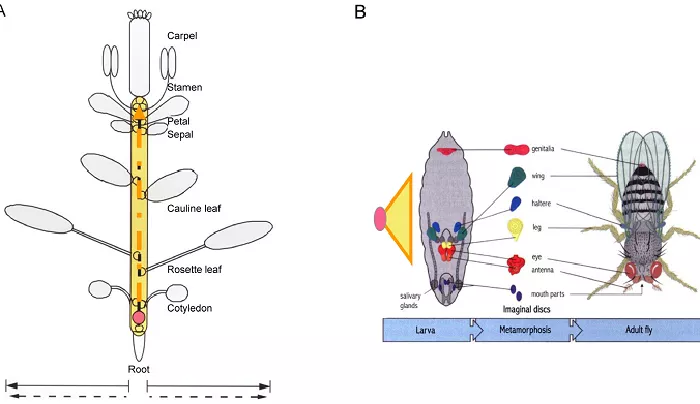On January 28, 2025, Professor Bai Shunong from the School of Life Sciences at Peking University published a viewpoint article titled “On Plant Developmental Unit: From Virtual Concept to Visual Plantlets” in the journal Plants. The article addresses long-standing ambiguities in plant developmental studies, such as whether a flower is an organ or a branch, whether plant development is infinite or limited, and whether a plant is an individual like an animal or an aggregate like coral.
These ambiguities have historical roots but persist due to the path dependency of knowledge inheritance. Despite advancements in research methods, the conceptual framework established by earlier scholars continues to influence current research questions and interpretations of experimental results.
In the past, descriptions of form (phenotype) were considered definitive, but the underlying genetic mechanisms (genotype) were unknown. Today, genetic factors are understood at the single-base resolution of DNA molecules, yet there is still no consensus on defining morphological characteristics. This lack of clarity poses a significant challenge in studying the regulatory mechanisms of plant morphogenesis.
To address this challenge, Professor Bai revisits the concept that plants are aggregates similar to coral or hydra. He proposes defining a basic unit for completing the life cycle, called the “plant developmental unit,” which includes a collection of different organ types emerging from the activity of the stem tip growth point. For example, in Arabidopsis thaliana, this unit includes cotyledons, rosette leaves, stem leaves, sepals, petals, anthers, and ovules. The types of organs are limited, but their quantities can be infinite.
The concept of plant developmental units was first introduced in 1999. This article re-examines it in light of research by Zhang Daming from the Institute of Botany, Chinese Academy of Sciences, who proposed that the world’s smallest angiosperm, duckweed, could represent the physical manifestation of plant developmental units. In 2023, a collaborative effort at Peking University led to the publication of “Plant-on-chip,” establishing duckweed as a model plant for studying plant developmental units. This research revealed that many classic conclusions about plant development may not reflect universal laws. For instance, the absence of the “primordium – primordium” structure in duckweed challenges previous assumptions about meristematic tissue function. Observations of duckweed also provide new insights into the origin of flowers, addressing what Darwin called the “Abominable Mystery.”
The duckweed research was conducted under a “crowdfunding” model due to a lack of traditional funding. However, the findings suggest that duckweed’s potential as a bioreactor could herald a second agricultural revolution, shifting focus from terrestrial to aquatic plants. Duckweed’s characteristics of high efficiency, stability, and great domestication potential make it a promising candidate for future agricultural advancements.
In conclusion, the study of duckweed not only promises to rewrite plant developmental biology textbooks but also has the potential to revolutionize human agricultural production.


